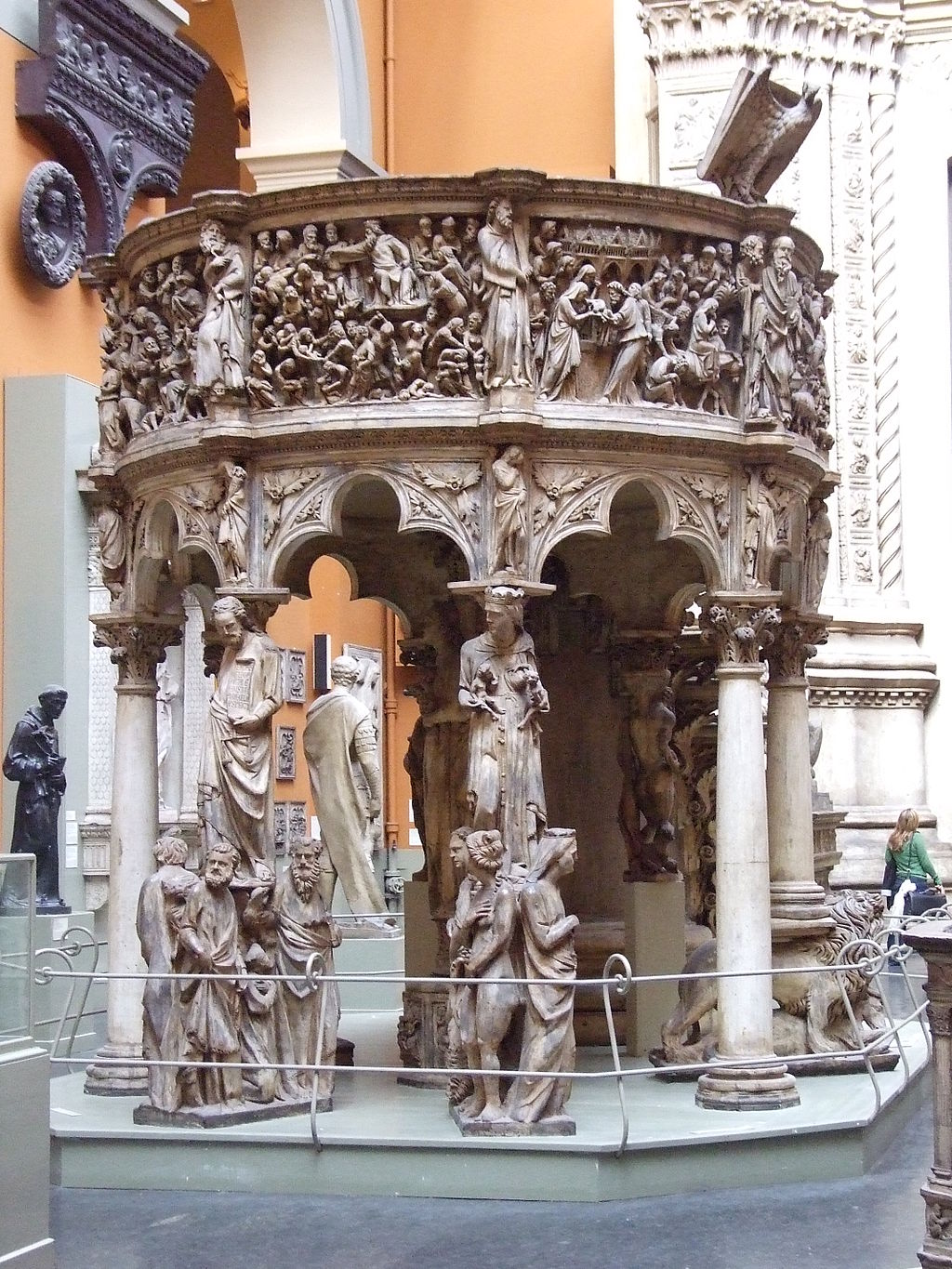Pulpit

|
| This pulpit by Giovanni Pisano was cast after a marble original in the Cathedral, Pisa. The original is situated on the left side of the nave, before the crossing. This cast can be found in the Victoria and Albert Museum Cast Court, London. |
A pulpit is an elevated structure, typically made from stone or wood, for a preacher or reader to address the congregation. In the Catholic religion, the pulpit is reserved for members of the clergy. The word pulpit originates from the Latin 'pulpitum' which means platform or staging.
Pulpits may be fitted with an acoustic canopy above and sometimes behind the preacher. Often made from wood, this canopy (referred to as a sounding board, tester or abat-voix) can help project the speaker’s voice.
Pulpits were initially incorporated into church buildings during the later Middle Ages. A stand known as an ambo was used in the early Middle Ages, up until roughly the 14th century.
Pulpits are sometimes elaborately carved. During the Italian Renaissance, pulpit reliefs were often undertaken as commissions by artists.
In some Protestant churches, the pulpit is considered the most important piece of furniture in the sanctuary. In both Protestant and Catholic churches, the pulpit is often placed in a position that projects closer to the congregation.
In English churches, there are a few instances of pulpits on wheels, which allowed them to be placed in an optimal position. There are also instances in Anglican churches where three-decker pulpits can be found. These combined a reading desk, a clerk’s stall and a preacher’s platform - one above the other.
[edit] Related articles on Designing Buildings Wiki
Featured articles and news
A change to adoptive architecture
Effects of global weather warming on architectural detailing, material choice and human interaction.
How big is the problem and what can we do to mitigate the effects?
Overheating guidance and tools for building designers
A number of cool guides to help with the heat.
The UK's Modern Industrial Strategy: A 10 year plan
Previous consultation criticism, current key elements and general support with some persisting reservations.
Building Safety Regulator reforms
New roles, new staff and a new fast track service pave the way for a single construction regulator.
Architectural Technologist CPDs and Communications
CIAT CPD… and how you can do it!
Cooling centres and cool spaces
Managing extreme heat in cities by directing the public to places for heat stress relief and water sources.
Winter gardens: A brief history and warm variations
Extending the season with glass in different forms and terms.
Restoring Great Yarmouth's Winter Gardens
Transforming one of the least sustainable constructions imaginable.
Construction Skills Mission Board launch sector drive
Newly formed government and industry collaboration set strategy for recruiting an additional 100,000 construction workers a year.
New Architects Code comes into effect in September 2025
ARB Architects Code of Conduct and Practice available with ongoing consultation regarding guidance.
Welsh Skills Body (Medr) launches ambitious plan
The new skills body brings together funding and regulation of tertiary education and research for the devolved nation.
Paul Gandy FCIOB announced as next CIOB President
Former Tilbury Douglas CEO takes helm.
UK Infrastructure: A 10 Year Strategy. In brief with reactions
With the National Infrastructure and Service Transformation Authority (NISTA).
Ebenezer Howard: inventor of the garden city. Book review.
Airtightness Topic Guide BSRIA TG 27/2025
Explaining the basics of airtightness, what it is, why it's important, when it's required and how it's carried out.





















